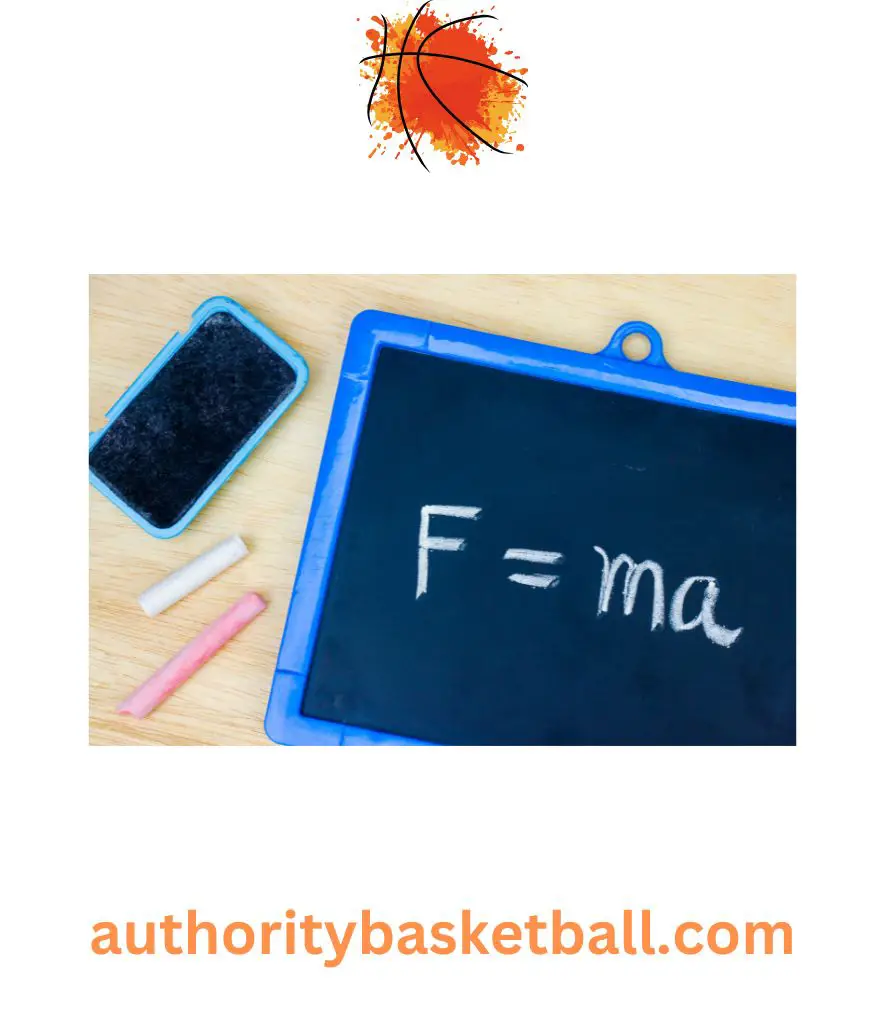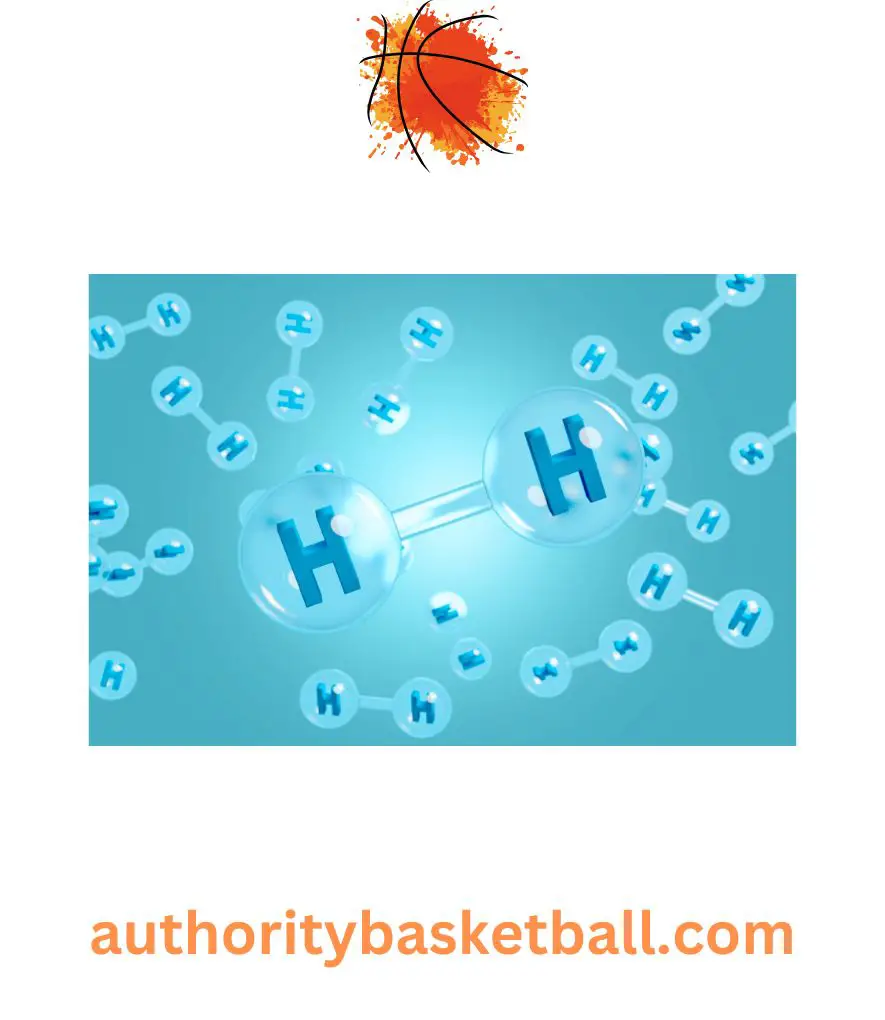When it comes to the game of basketball, one of the most distinctive and captivating aspects is the rhythmic bounce of the basketball itself.
As players dribble, pass, and shoot, the ball gracefully rebounds off the court, seemingly defying gravity.
Have you ever wondered what causes a basketball to bounce so effortlessly?
The answer lies in the fascinating interplay between the laws of physics and the unique properties of the materials used in its construction.
Understanding the science behind why basketballs bounce not only deepens our appreciation for the game but also sheds light on the fundamental principles that govern our physical world.
In this article, we’ll delve into the physics behind this captivating phenomenon, exploring the role of elasticity, energy conservation, and momentum transfer that allows a basketball to soar through the air with every bounce.
As always, we begin with a quick answer summary…
A basketball bounces due to the materials it’s made of (i.e. rubber or synthetic); the force applied to it, and the laws of physics. Although the primary reason a basketball bounces is due to the elastic nature of the materials it’s composed of, which allow the ball to deform and store potential energy upon impact. This potential energy is then rapidly converted into kinetic energy, propelling the ball upward and causing it to bounce.
So, let’s now embark on this exploration and uncover the secrets behind the mesmerizing bounce of a basketball.
Reasons for the bounce of a basketball
There are three major factors at play.
Let’s now talk about each one in turn.
1. Material composition of the ball itself
The material of a basketball, typically rubber or synthetic materials, is specifically chosen for its elastic properties, which allow the ball to bounce.

Elasticity refers to the ability of a material to deform under stress and then return to its original shape when the stress is removed.
Rubber, in particular, is highly elastic.
It has a unique molecular structure that allows its polymer chains to stretch when a force is applied and then snap back into place when the force is released.
This elastic property gives rubber its ability to store and release energy.
When a basketball impacts a surface, the force applied to it causes the rubber or synthetic material to deform, compressing its structure.
As the material is compressed, it stores potential energy in its molecules, similar to compressing a spring. This potential energy is a result of the stretching and bending of the polymer chains within the material.
When the force is removed, such as when the ball reaches its maximum compression point, the stored potential energy is rapidly converted into kinetic energy.
The elastic material of the ball recoils and regains its original shape, pushing off the surface it collided with.

As a result, this release of kinetic energy propels the ball upward, causing it to bounce.
Another point to note about the material is that its elasticity ensures that the majority of the energy is conserved during the bouncing process.
While some energy is obviously lost as heat and sound due to internal friction and air resistance, the ball retains enough energy to continue bouncing.
2. Force application
When a force is applied to a basketball, it causes the ball to bounce due to the interaction between the force and the ball’s material properties.

Let’s quickly break this down…
When a basketball is pushed or dropped, an external force is exerted on the ball.
According to Newton’s laws of motion, this force causes an acceleration in the ball’s motion.
Now, the magnitude of the acceleration depends on the force applied and the mass of the ball (Newton’s second law).

As the basketball approaches a surface, such as the ground or a basketball court, the force of the impact causes the ball to deform.
Now this where the ball material comes in handy.
The rubber or synthetic build – chosen for its elastic properties – are materials that can be compressed and stretched when a force is applied and then quickly regain their original shape when the force is removed.
So, upon contact with the surface, the force of the impact causes the ball’s material to compress.
And as the material compresses, potential energy is stored within it. This potential energy is a result of the elastic deformation of the material, similar to compressing a spring.
When the compression reaches its maximum point, the stored potential energy is converted back into kinetic energy.
Finally, the elastic material of the ball recoils and regains its original shape, pushing off the surface.
It’s this very release of kinetic energy that propels the ball upward, ultimately causing it to bounce.
In summary, the application of force to a basketball causes the ball’s material to deform and store potential energy. The release of this potential energy as kinetic energy propels the ball upward, leading to the bouncing motion.
3. Laws of physics
The bouncing of a basketball is governed by several fundamental laws of physics, including Newton’s laws of motion and the principle of conservation of energy.
- Newton’s First Law of Motion (Law of Inertia): This law states that an object at rest tends to stay at rest, and an object in motion tends to stay in motion with the same speed and in the same direction unless acted upon by an external force. When a basketball is at rest on the ground, it remains stationary until an external force, such as someone dropping it or throwing it, is applied.
- Newton’s Second Law of Motion: This law states that the acceleration of an object is directly proportional to the net force applied to it and inversely proportional to its mass. When a basketball hits the ground or any surface, a force is applied to it in the opposite direction to its motion. According to Newton’s second law, this force causes the ball to decelerate as it compresses.
- Conservation of Energy: The principle of conservation of energy states that energy cannot be created or destroyed but can only be transferred or transformed from one form to another. As the basketball rebounds, the stored potential energy is converted back into kinetic energy. The ball recoils and regains its original shape, releasing the stored energy. This kinetic energy propels the ball back into the air, causing it to bounce.
- Conservation of Momentum: The conservation of momentum states that the total momentum of a system remains constant if no external forces act upon it. When a basketball bounces, the change in momentum occurs due to the reversal of the ball’s direction. As the ball hits the surface and rebounds, its momentum changes, and it transfers momentum to the surface it bounces off.
In combination, these laws of physics explain how the forces applied to a basketball, the deformation of its material, and the transformation and conservation of energy allow the ball to bounce.
Why does a basketball bounce higher with more air inside it?
Air molecules are naturally elastic—they don’t stick together like water molecules but rather bounce off of each other in the open.
When tightly packed together inside a basketball, air molecules form a highly elastic unit of air.
The air inside a basketball is like a tightly coiled spring. The tighter the spring, the more energy it has to bounce back up.

A similar principle applies to the air inside the ball: the harder it pushes back against the ground, the higher the ball rises into the air.
If there isn’t enough air pressure inside, a great deal of the energy is spent bending the molecules in the ball’s rubber.
Unless a ball is constructed of special rubber (such as a superball), a great deal of the energy does not escape but instead heats up the ball.
As a result, there is only so much air that can be squeezed into the area within the ball that it pushes out extremely aggressively, preventing the ball’s walls from squishing too much.
This makes the ball bounce more.
What energy allows a basketball to bounce?
The underlying physics behind the bounce of a basketball is quite an intriguing topic to investigate.
Now, if you’re wondering what type of energy causes this object to bounce, then read on because you’re going to get the answer.
It all boils down to kinetic and potential energy.
Time for a little science refresh!
When a basketball hits a surface, such as the ground or a basketball court, the surface applies a force to the ball in the opposite direction to the ball’s motion.
This force causes the ball to deform or compress, storing potential energy within its material.
The rubber or synthetic materials used in the ball’s construction are designed to be highly elastic, meaning they can deform and then quickly regain their original shape when the applied force is removed.
Once the ball reaches its maximum compression point, the potential energy stored in its material is converted into kinetic energy as the ball recoils.
The ball rapidly regains its original shape, pushing off the surface it collided with. The kinetic energy causes the ball to rebound off the surface, propelling it upward into the air.
The conservation of energy principle is also at play here.
When the ball bounces, some of its energy is lost as heat and sound due to the internal friction and air resistance.
However, the majority of the energy is conserved, allowing the ball to continue bouncing, albeit with each subsequent bounce being lower than the previous one due to the energy loss.
What surface does a basketball bounce best on?
Whether it’s a hardwood, asphalt, or concrete laid court, each surface has a distinct feature that influences the basketball’s behaviour during games.
For starters, hardwood courts are often the best and most utilised surface for basketball games because they provide a sturdy surface that hardly absorbs any kinetic energy from the ball falling onto it, thereby allowing for excellent ball handling and bounce.

The court’s surface is smooth and firm, offering a high amount of grip and making ball control simpler during play due to better overall predictability for how the ball will rebound off of this type of floor.
Concrete and asphalt court surfaces, on the other hand, are among the worst basketball bounce surfaces because they are excessively rigid and not as flexible as a hardwood court.

Because of their rough and uneven surface, they provide poor traction and an unpredictable bounce, making it difficult to control the ball throughout the game.
The ball can easily bounce in an unanticipated direction that’s out of the players’ own control, which may subsequently affect overall player performance.
Concluding thoughts
The bouncing of basketballs is a fascinating interplay between the laws of physics and the unique properties of the ball’s materials.
You see, the elastic nature of rubber or synthetic materials allows basketballs to deform and store potential energy upon impact, which is then rapidly converted into kinetic energy upon rebound.
Newton’s laws of motion, the principles of energy conservation, and the transfer of momentum all contribute to the mesmerizing phenomenon of a basketball’s bounce.
Whether on a hardwood court or an outdoor blacktop, the inherent ability of basketballs to bounce captures the essence of the game, providing endless excitement and opportunities for players to showcase their skills.
We’ll leave you with a video which summarises this concept quite succinctly.
Check it out below:
For further reading on this piece of sporting equipment, have a look through our articles on the following topics:
- what basketballs actually smell like;
- why basketballs have little dots on them; and
- what causes basketballs to form lumps
- The Most Popular Prop Bets Made During the NCAA Final Four Tournament - February 9, 2024
- Evaluating the Enigma: Does LeBron James Possess a No-Trade Clause? - May 16, 2023
- Gravity’s Dance: Unveiling the Art of Bouncing Basketballs - May 16, 2023

